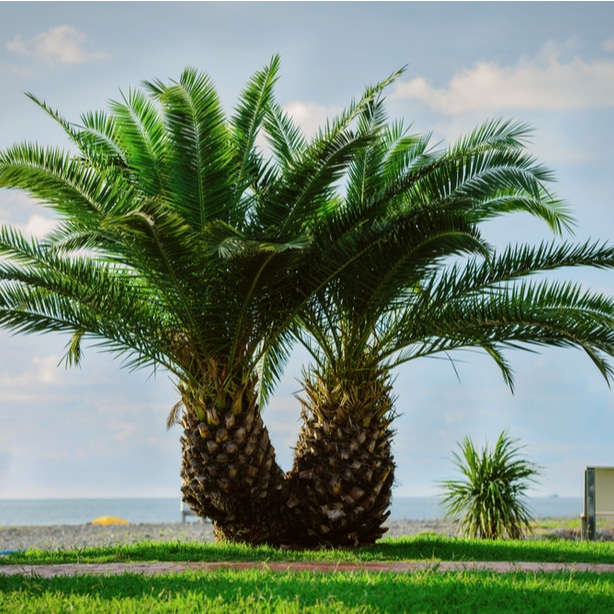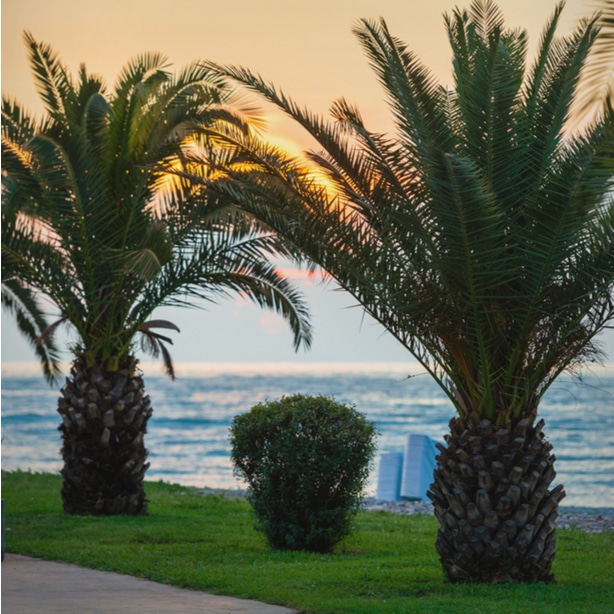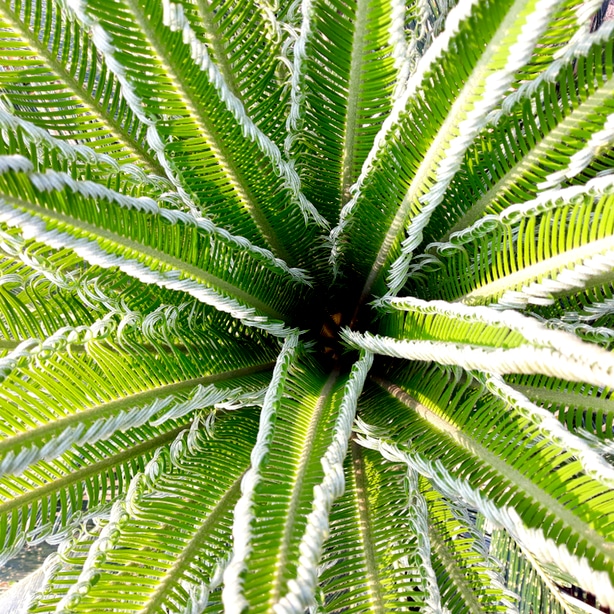The Pygmy Date Palm (Phoenix roebelenii) is a subtropical tree that is commonly used in outdoor landscaping. It also finds use as a houseplant, as it doesn’t grow much larger than 5 feet while indoors. The palm species is native to southeast Asia, including areas of Southern China, Laos, and Vietnam.
They are popular in gardens and landscaping around the world. They would make a great backdrop to a backyard pool or other water feature. They experience full growth in about 5-10 years, which is much faster than many other varieties. Its height is what makes it such a popular species, as similar species grow to be 5 or more times the height.
Keep reading below for our collection of essential care tips and information.
If you have a Chinese elm tree, then you might also want to check out our guide on how to raise a healthy Chinese elm tree.

General Information
Pygmy palm trees are native to the subtropical areas of Southeast Asia, which leads to them performing best in USDA Hardiness Zones 10 and 11. Some specimens have been known to survive in zone 9b, but you may need to offer some protection from the frost during cold nights.
In cooler climates, they are often grown in containers on a patio during the summer, only to become a houseplant over the winter.
The leaves of these palm trees are called fronds. The fronds form the “crown” on top of the trunk.

How Fast Do They Grow?
They grow at a rate of 1-2 feet per year. When grown outdoors, they usually reach a height of 8-12 feet with a crown around 5 feet wide. When grown indoors, they will reach a height of about 5 feet with a crown around 4 feet wide.
Where Do They Grow Best?
They grow best in tropical and subtropical climates (which is their native environment). In cooler areas, they can be grown in a greenhouse or as houseplants. They are a common indoor plant due to their small root size, which means that they don’t require frequent repotting while still providing large indoor foliage.
General Care Guide
To care for these palm trees, make sure to maintain a regular watering scheduled and to plant them in well-drained soil. Pruning and fertilization can be performed once or twice a year, and you may not need to water for most of the year if your area receives adequate rainfall.
Amount of Sun
These palm trees prefer partial shade or filtered light, although they will tolerate full sun in milder climates. If it becomes too hot in the afternoon where you live, you can add a layer of mulch to help keep the plant’s roots cool and prevent excessive moisture loss from the soil.
Watering Frequency and Soil
They should be watered roughly once per week in most climates. The trees grow best when the soil stays consistently moist. You can test the soil by inserting your finger into the soil. If it is dried at a depth of about 2 inches, it is time to water again. They grow optimally in well-drained soil.
Contrary to most plants, they will actually thrive in slightly root-bound conditions. If growing indoors, there is no need to repot frequently.
The soil should be a pH of 7 or less. When the pH level is higher, the trees can develop nutrient deficiencies or issues with their fronds.

You may also want to check out our guide on taking care of queen palms.
Fertilization
They can be fertilized once or twice a year using a commercial palm fertilizer. Not only do palm fertilizers contain the levels of nitrogen, phosphorus, and potassium that all plants need, but they also provide the elements that are commonly deficient in palm trees, such as boron, manganese, and other micronutrients.
Only feed your trees while they are in their growing season, as you could otherwise burn the roots. A slow-release fertilizer is also recommended to prevent the same problem.
Lifespan
Pygmy palm trees have a lifespan of 25-50 years. This number can vary widely and depends on a few things, including the climate and conditions in which they are grown, as well as whether they are grown indoors or outdoors. Trees that are given ideal watering, light, and soil conditions will have longer lives.

Pruning
These palm trees are not self-cleaning and may require occasional leaf removal to keep a tidy appearance. When pruning, remove the dead or dying fronds just above the leaf base. Be sure not to cut into or injure the trunk. Also, removing green fronds may result in damage.
Flowers
Pygmy Date palm trees are dioecious, meaning that they are either male or female. The male trees produce flowers that produce pollen, while the female trees produce flowers that receive this pollen. When the female’s flowers have been pollinated, they will produce fruits called dates. The dates contain seeds for future reproduction.
In order for your palms to produce dates, you must have both a male and female in close proximity. Once both trees have reached maturity, the female will be able to start producing dates.


